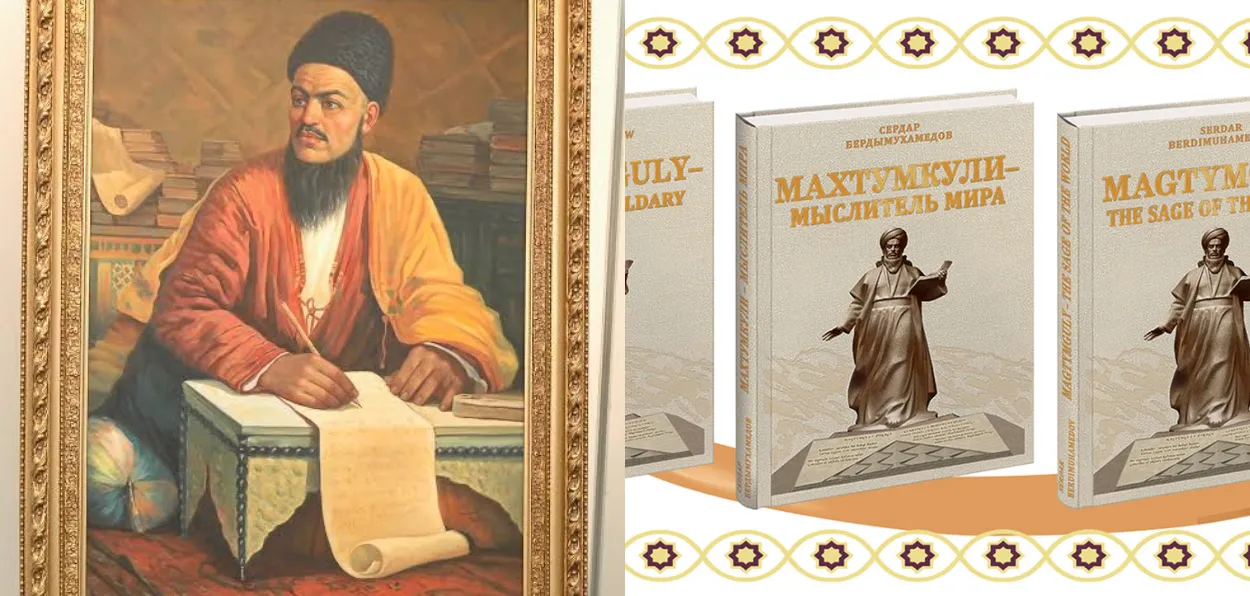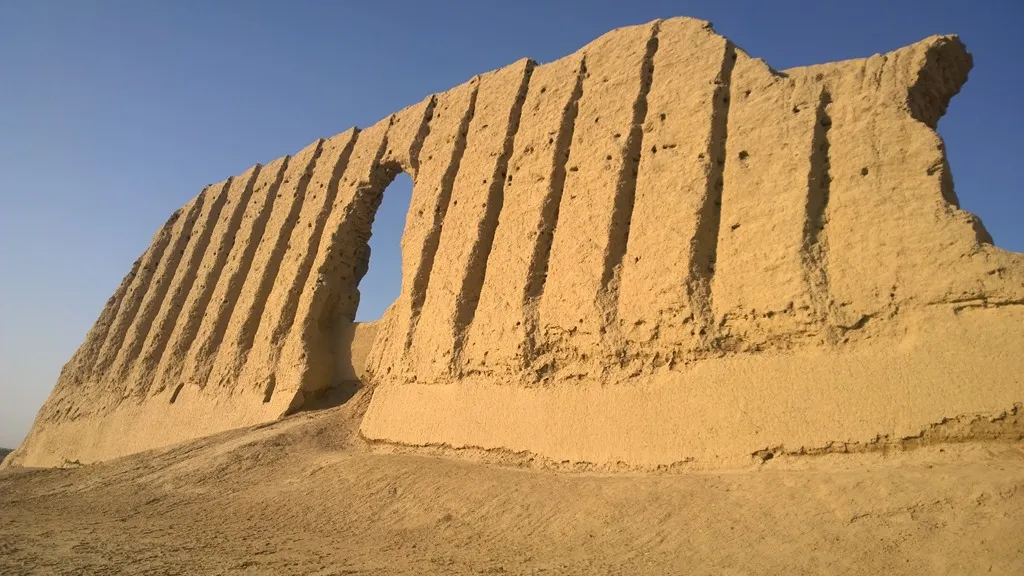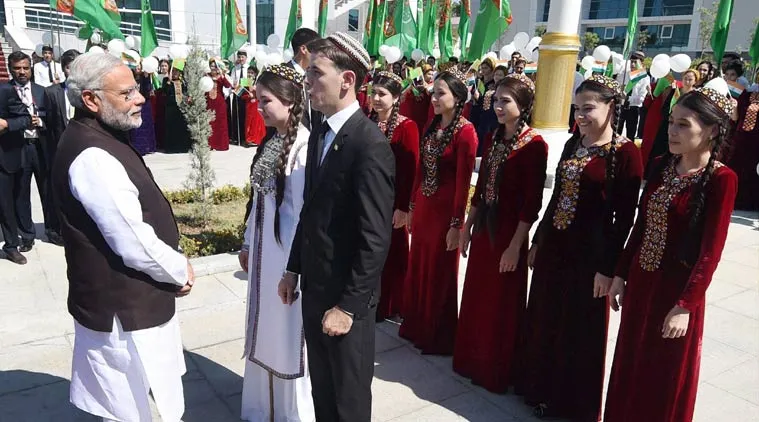
Aditi Bhaduri
On April 11 at a function in New Delhi the book Magtymguly – the Sage of the World was presented. The book is authored by the President of Turkmenistan Serdar Berdimuhamedov. Many Turkmen students attended the function organized by the Embassy of Turkmenistan in New Delhi. Magtymguly – the Sage of the World, highlights the legacy of the outstanding master of the word, his contribution to the world literature, and the events organized on the occasion of the poet’s jubilee.
Magtymguly, was an Iranian-Turkmen poet, philosopher, Sufi, and traveler. He was born around 1724 in the Iranian province of Golestan, where he passed away, and lies buried. He traveled across Central Asia, where he is greatly admired and respected to this day, and passed away in 1827. His tomb has become a place of pilgrimage for many.
He is considered the greatest representative of Turkmen literature and is credited for creating written Turkmen literature. Much like the style of poets at the time in the region, his poetry was considered metaphysical. Take, for example, these lines:
I am separated from my flower
From my black-haired beauty
From my nice-voiced nightingale.
I am separated from my sweet-talking love
I first heard of Magtymguly in Turkmenistan. Everyone I met spoke about him. However, to me, the most interesting part of his story was the poet's love for India, or Hindustan, as India is known in Turkmen. There is no poem as such on India, but Magtymguly is said to have visited northern India (around today’s Khyber-Pakhtunkhwa in Pakistan) during his travels to Afghanistan and other countries of Central Asia.
.webp) A session on the Book
A session on the Book
If Magtymguly was talked about for his love for Hindustan, then a definite bond between India and Turkmenistan was an even earlier personality - Bairam Beg, or as we better know him - Bairam Khan. Bairam Beg, the mentor and teacher of Akbar the Great, before he became great, is a national hero in Turkmenistan. Khan was Akbar's regent when his father Humayun passed away, and helped Akbar consolidate his hold on the empire. Bairam Khan's son Rahim Khan i Khana became one of the nine gems that decorated Akbar's court, and his verses, known as Rahim ke dohe still resonate with many in India.
Bairam Khan never lived in Turkmenistan, but he was of Turkmen origin, belonging to the Turkmen Baharlu clan. He lived almost all his life within the Mughal court. Yet, he is celebrated in Turkmenistan as a major contributor to the Timurid-Mughal heritage, as a great warrior, statesman, and poet, and of course, as Akbar's regent. His statue decorates the center of the Turkmen capital Ashkhabad, his life is taught in schools and universities, and seminars and tomes are dedicated to him. He is a source of pride for Turkmen.
But if you thought that ties between India and Turkmenistan spanned only the medieval period, then nothing could be further from the truth.
Ties between the people of India and Turkmenistan can be traced to the remote past. While there have been reports of linkages between the Indus Valley Civilization and Turkmenistan, what this author witnessed was proof of definitive ties between India and Turkmenistan in the pre-Christian era, through Buddhism.
Buddhism is not only the first global religion, but a great factor binding different regions and cultures, and languages, transcending political and geographical borders, uniting different ethnicities and races. And Turkmenistan has traditionally been considered to be at the "crossroads of history". It has been an important stop on the ancient Silk Route, and a melting pot of different cultures even before that. It was thus inevitable that Buddhism would permeate this region.
In the pre-Christian era, a Buddhist community following the Mahayana School of Buddhism settled in this region. While Emperor Ashok first spread Buddhism beyond ancient India's borders, the Parthian, the Kushana, and the Sikh rulers of north-west India later played an important role in spreading Buddhist ideas and Indian culture in Central Asia. There was a major influx of Buddhist missionaries into these territories during the Kushana period, traveling through Bactria, namely, present-day Afghanistan.
 City of Merk, Turkmenistan
City of Merk, Turkmenistan
I had the opportunity to visit the ancient city of Merv in Southern Turkmenistan, now an excavation site where each year throws up a new find, giving a glimpse into the region's long and rich history. Turkmenistan shares a border with Afghanistan and Merv - now a barren land but once a thriving oasis - is near the Afghan border. Once upon a time, it was the most important center for Buddhist culture in Central Asia.
Another stupa was dug up by chance in Bairam Ali, the largest modern town near Merv. The stupas testified to the fact that not only did Buddhist culture spread on the territory of Turkmenistan, but also flourished! The first stupa dates from the second century AD. The second stupa is architecturally close to the first one but built four centuries later. What is most important about the stupas excavated in Merv, however, is the fact that these are the western-most, extant Buddhist monuments discovered till now.
The exquisitely painted Merv vase was extracted from a stupa. The tall jar with handles has details of scenes depicting life and death in black, red, and blue. Some of the rarest Buddhist manuscript texts in Sanskrit of the Dhammapada - the main Buddhist scripture inscribed on birch bark - were found inside it, written in the Brahmi script. The manuscripts had been restored and at the time of my visit to the country, these were housed at the Institute of Oriental Studies in St. Petersburg.

Prime Minister Narendra Modi during his visit to Turkmenistan
According to scholars and historians, Buddhist manuscripts found in East Turkmenistan and Central Asia remain the only original texts of the Buddhist canon known anywhere in the world. Almost none of these texts have been preserved in India.
While I could not view the manuscripts, I was privileged to view one of the most coveted finds during the excavation of the Gaur Kala stupas. It was a 75-cm-high head of the Buddha. It belonged to a taller statue from the second and third centuries about the same time the now-destroyed Bamiyan Buddhas were created. The head was fashioned from clay and covered with three coats of paint-rose, yellow, and red. The face of the Buddha exuded serenity and majesty. The head had undergone a long and painstaking restoration at the Archeological Centre of Turkmenistan's capital, Ashkhabad, and was then housed in the National Museum of Turkmenistan in Ashkhabad.
This is supposed to be one of the first statues of the Buddha and represents the Gandhara School of Art, which originated in north-west India and Afghanistan, then called Gandhara. Many more pieces of Buddhist art were unearthed at the excavation site in Merv - small statuettes of the Buddha, Bodhisattvas, a noblewoman, and harpists.
Turkmenistan has lovingly and carefully preserved all these relics, which are housed in the Turkmen National Museum. I recall my Turkmen guide proudly showing me these treasures of a Muslim country's pre-Islamic past.
ALSO READ: 1965 Indo-Pak war: When brothers were pitted against each other on battlefield
This is how India and Turkmenistan have been linked throughout history and in different ages - through Buddhism and the Timurid-Mughal heritage. The two countries now must carry this legacy forward.
